The BIG ones to look for.
Today we are going to discuss preservatives. I see a lot of products that my clients bring in and they will have some beautiful natural ingredients, antioxidants, extracts and I get so excited until I reach the long list of preservatives that I feel aren’t necessary. Like most of what you have heard me discuss, there are conflicting arguments and data so I am going to share with you the ones I commonly look out for and why.
In case you didn’t catch my video about Parabens, they do take the number one spot of preservatives to avoid. They are endocrine disrupting chemicals because of their ability to mimic estrogen within our bodies. Since hormones communicate with nearly every system in our body, the health risks are substantial. Studies have shown evidence of their effects on our reproductive systems (male & female), thyroid disfunctions, cancer and more. The most common that you need to avoid are Methyl-, ethyl-, propyl-, isopropyl-, butyl- and isobutylparabens.
Next are formaldehyde releasing preservatives that slowly emit formaldehyde over time. Since formaldehyde is a classified carcinogen to humans, you won’t see it clearly labeled. Instead, these slow release compounds are allowing companies to have this carcinogen present in your products. They can make your skin highly sensitive and are listed as a skin allergen. The most common are DMDM hydantoin, Diazolydinal urea, Imidiazoldinal urea, Quaternium-15, Bronopol (2-Bromo-2-Nitropropane) 5-Bromo-5-nitro-1,3-dioxane and Hydroxymethylglycinate.
The last two I want to discuss are commonly used together, Methylisothiazolinone (MIT) and Methylchloroisothiazolinone (CMIT) commonly referred to as Isothiazolinones. Typically seen in liquid products like makeup remover, shampoo, body wash, detergents, etc. These compounds are linked to having health concerns such as lung toxicity, allergic reactions and even neurotoxicity at higher levels of exposure. Irritation to the skin is common when exposed to these compounds, so much so, The American Contact Dermatitis Society named MIT Allergen of the Year for 2013 due to the skin sensitization resulting from topical exposure to it. Look for these compounds on the label, Methylisothiazolinone (MIT): 2-methyl-4-isothiazoline-3-one, Neolone 950 preservative, MI, OriStar MIT and Microcare MT. Methylchloroisothiazolinone (CMIT): 5-Chloro-2-methyl-4-isothiazolin-3-one and MCI.
Does a ‘Natural’ product get preserved naturally?
Does having a product that claims to be ‘Natural’ or containing ‘Natural Ingredients’ mean it is going to be preserved naturally? The answer really lies in a gray area of what the definition of ‘Natural’ means, in regard to cosmetics. According to the FDA, “It has not defined the term “natural” and has not established a regulatory definition for this term in cosmetic labeling.”
Needless to say, there are about 50 different shades of ‘Natural’ when it comes to ingredients in cosmetics. How they are preserved is just as broad and typically up to the company to maintain Good Manufacturing Practices (GMP) or third-party testing.
Which ones are better?
When you are scanning a product for purchase, most people advocate that if you can’t read any of the ingredients, you probably shouldn’t buy it. While that is a start to this process, I usually advocate for my clients to first understand the organization of the ingredient label. According to the FDA, “The ingredients must be declared in descending order of predominance, “meaning that the ingredients making up the bulk of the product are listed first. If water or aqua are listed first, you know that the product is going to need to be preserved, rightly so. Most will be listed at the bottom of the ingredient label, but not always, it depends on the concentration needed.
The preservatives that I look for are derived from plants. Most commonly used are glycerin, citric acid, salicylic acid, rosemary extract, coconut fruit extracts, lactic acid, some essential oils can also help preserve but with caution due to their potency. There are many more that you can view from the highly regarded, third party certification company in France, EcoCert. They follow the international COSMOS-standard which they state “defines the criteria that companies must meet to ensure consumers that their products are genuine organic or natural cosmetics produced to the highest feasible sustainability practices.” I have provided links below if you’d like to know more.
Conclusion:
Thank you for watching my video! Be on the lookout for more topics, like this one, in my series ‘Deconstructing Skincare. Together we can make the shift toward better health and clean beauty.
Resources:
*https://www.cosmos-standard.org/
*https://www.ecocert.com/en/certification-detail/natural-and-organic-cosmetics-cosmos
* https://www.safecosmetics.org/get-the-facts/chemicals-of-concern/methylisothiazolinone/
* https://www.ewg.org/research/exposing-cosmetics-cover-up#formaldehyde
* https://www.fda.gov/cosmetics/cosmetics-labeling/shelf-life-and-expiration-dating-cosmetics
*https://www.nsf.org/knowledge-library/organic-personal-care-products


